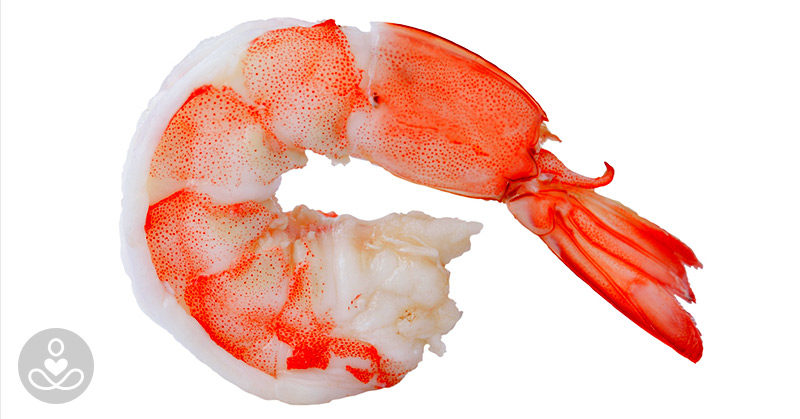Under the sea, under the sea, darling it’s better down where it’s wetter, take it from me. As true as that may be for the water-dwellers, Americans prefer seafood on their plates. Over the last couple of decades, shrimp has become the most widely consumed seafood in the United States (along with canned tuna and salmon). [1] What many people are unaware of is that 90 percent of Americans’ seafood is imported from other countries such as China, Ecuador, India, Indonesia, Mexico, Thailand, and Vietnam. [2] But, shrimp that is required to travel such long distances to reach your kitchen also increases the use of food additives and preservatives. With this news floating to the surface, consumers are thinking one thing…
“I love Seafood, But Is Shrimp Healthy?”
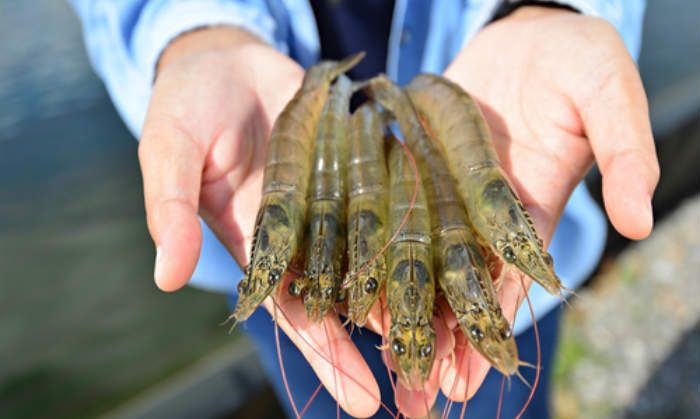
Short answer, yes! Shrimp can be healthy as long are you’re consuming the right kind. If you do that, your body can reap the health benefits of many minerals, vitamins, and healthy fats. So, keep reading to find out how and where to find the best and safest shrimp! Whether it’s considered fresh or frozen, shrimp remains the number one U.S. seafood import – 33 percent to be exact. [1] With so many people consuming this popular food, it’s crucial for you to know the dark side of shrimp nutrition that is rarely (if ever) advertised.
In the same way that wild caught salmon is safe and healthy to eat, so is wild shrimp.

However, the numbers don’t lie and you can see that most seafood – shrimp especially – comes from countries with questionable food and safety regulations. Shrimps from these countries usually come from unhygienic, over-crowded farms and fed antibiotic-filled pellets. However, there is one little-known food additive that scientists have found can mimic and disrupt your hormones as well as increase cancer risk. So, is shrimp healthy? The study’s findings are alarming so we’ll let you be the judge.
Is Shrimp Healthy? Here’s One Major Reason It May Not Be…
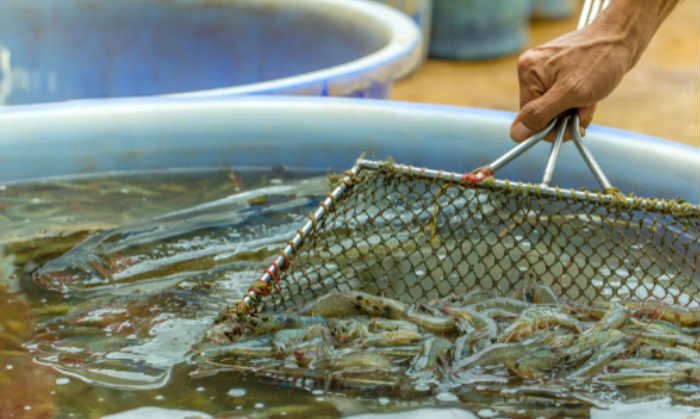
Scientists in Italy published a study in Chemical Research in Toxicology after finding food additives that had previously unrecognized estrogen-like effects. [3] The additive that we’re going to highlight is 4-hexylresorcinol, which some food producers use to stop shrimp and other shellfish from becoming discolored. [4,5]
The study was intended to find xenoestrogens that are found in food additives, which are endocrine-disrupting synthetic chemicals that can mimic natural estrogen – and they did. In fact, the “foreign” estrogen used as a food additive in shrimp has been linked to “reduced sperm counts in men [and] an increased risk of breast cancer in women.” [4-6]
Increased Risk

Xenoestrogens are also apparently non-biodegradable and, over time, can accumulate in your body’s fat cells. Depending on your chemical makeup and xenoestrogen levels, they can also increase your risk of prostate, testicular, kidney, lung, pancreas and brain cancer, endometriosis, obesity, infertility, diabetes, and miscarriages. [7-9]
Because there are many types of xenoestrogens, there isn’t a set amount that people are told to avoid. However, when it comes to one of the most dangerous xenoestrogens that we know of, BPA, the Environmental Protection Agency claims that you shouldn’t consume more than 50 micrograms per kilogram a day. The European Union suggests a far smaller daily dose at just 5 micrograms. [10] In any case, it seems wise to limit your daily intake of xenoestrogens as best as you can.
Antibiotics Used in Imported Shrimp Aren’t Helping Either
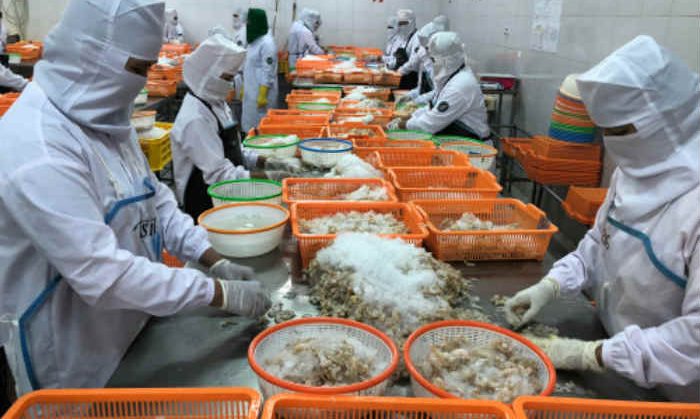
If you’re still wondering “is shrimp healthy?” you probably aren’t aware of all the antibiotics used in imported seafood. Imagine thousands upon thousands – even millions – of shrimp in overcrowded farms. They are a recipe for toxins and bacteria that are unfortunately remedied daily with antibiotics (e.g., ciprofloxacin and oxytetracycline). [11] In shrimp samples taken from shrimp ponds as well as surrounding canals in North and South Vietnam, researchers even found traces of oxalinic acid, norfloxacin, sulfamethoxazole, and trimethoprim. [12]
Astonishingly, according to a 2015 study published in the Journal of Hazardous Materials, when researchers analyzed shrimp purchased in the United States, they found traces of 47 antibiotics. [13] With so many antibiotics being pumped into the food we eat, our chances of falling ill are rising. The more bacteria are exposed to this wide range of antibiotics, the more likely they are to become antibiotic-resistant. Thankfully, there is a way to avoid consuming such high-risk foods.
Shrimp Nutrition: When Is Shrimp Healthy?
We have an in-depth guide to dangerous farmed seafood and how to avoid contamination already, but here’s a quick summary for shrimp enthusiasts.
- Purchase shrimp that the Wild American Shrimp or Marine Stewardship Council has certified as antibiotic-free
- Buy wild North American shrimp which are often more sustainable and wild caught
- Make sure it has a mild, non-fishy, non-sour smell
- Shrimp should be translucent in color
- It should feel firm
What You Get

Shrimp nutrition, when purchased from the right environment, is incredibly beneficial for your health! In just three ounces of shrimp per day, you’re getting: [14]
- 84 calories
- 18 grams of protein
- 48% of selenium
- 21% of vitamin B12
- 15% of iron
- 12% of phosphorus
- 11 % of niacin
- 9% of zinc
- 7% of magnesium
The Bottom Line

After reading all of this, we completely understand if you want to take a break from eating shrimp. We acknowledge that there are far less risky seafood out there with just as much if not more nutritional value, so try eating those instead. They can include wild-caught Alaskan salmon and cod which are both rich in vitamins and healthy fats. [15]
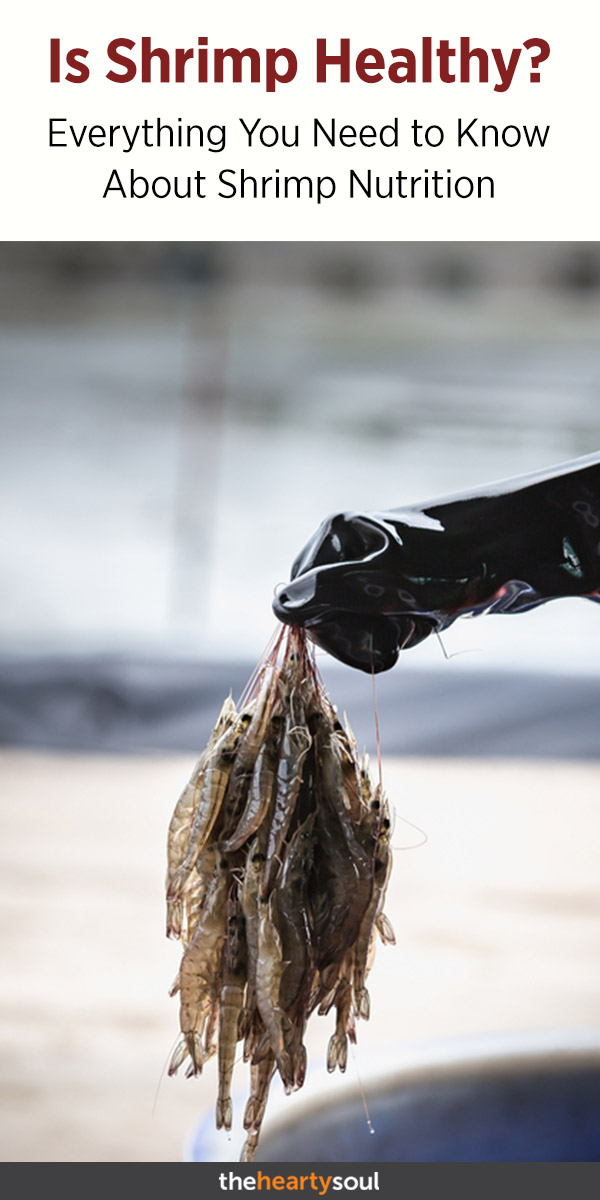
[1] Seafood Health Facts: Making Smart Choices. (n.d.). Retrieved from https://www.seafoodhealthfacts.org/seafood-choices/overview-us-seafood-supply
[2] Wang, X., & Reed, M. Estimation of U.S. Demand for Imported Shrimp by Country: A Two-stage Differential Production Approach [PDF]. AgEcon Search. https://ageconsearch.umn.edu/bitstream/162459/2/SAEA%202014.pdf
[3] Amadasi, A., Mozzarelli, A., Meda, C., Maggi, A., & Cozzini, P. Identification of Xenoestrogens in Food Additives by an Integrated in Silico and in Vitro Approach. Retrieved from https://www.ncbi.nlm.nih.gov/pmc/articles/PMC2758355/
[4] American Chemical Society. Two Food Additives Have Previously Unrecognized Estrogen-like Effects. Retrieved from https://www.sciencedaily.com/releases/2009/03/090302125924.htm
[5] Hexylresorcinol. (n.d.). Retrieved from https://www.sciencedirect.com/topics/biochemistry-genetics-and-molecular-biology/hexylresorcinol
[6] Xenoestrogen. (n.d.). Retrieved from https://www.sciencedirect.com/topics/neuroscience/xenoestrogen
[7] Watson, C. S., Jeng, Y., & Guptarak, J. Endocrine disruption via estrogen receptors that participate in nongenomic signaling pathways. Retrieved from https://www.ncbi.nlm.nih.gov/pmc/articles/PMC3106143/
[8] De, S., & Van, N. (n.d.). Endocrine-disrupting chemicals: Associated disorders and mechanisms of action. Retrieved from https://www.ncbi.nlm.nih.gov/pubmed/22991565
[9] Fucic, A., Gamulin, M., Ferencic, Z., Katic, J., Krauss, M. K., Bartonova, A., & Merlo, D. F. Environmental exposure to xenoestrogens and oestrogen related cancers: Reproductive system, breast, lung, kidney, pancreas, and brain. Retrieved from https://www.ncbi.nlm.nih.gov/pmc/articles/PMC3388472/
[10] Lorber, M., Schecter, A., Paepke, O., Shropshire, W., Christensen, K., & Birnbaum, L. Exposure assessment of adult intake of bisphenol A (BPA) with emphasis on canned food dietary exposures. Retrieved from https://www.ncbi.nlm.nih.gov/pmc/articles/PMC4469126/
[11] Costa, R. A., Araújo, R. L., Souza, O. V., & Regine Helena Silva dos Fernandes Vieira. (2015). Antibiotic-Resistant Vibrios in Farmed Shrimp. Retrieved from https://www.ncbi.nlm.nih.gov/pmc/articles/PMC4396125/
[12] Le, T. X., & Munekage, Y. Residues of selected antibiotics in water and mud from shrimp ponds in mangrove areas in Viet Nam. Retrieved from https://www.ncbi.nlm.nih.gov/pubmed/15556177
[13] Done, H. Y., & Halden, R. U. Reconnaissance of 47 antibiotics and associated microbial risks in seafood sold in the United States. Retrieved from https://www.ncbi.nlm.nih.gov/pubmed/25449970
[14] Crustaceans, shrimp, mixed species, cooked, moist heat Nutrition Facts & Calories. (n.d.). Retrieved from https://nutritiondata.self.com/facts/finfish-and-shellfish-products/4174/2
[15] Bowling, N. 11 Best Types of Fish to Eat. Retrieved from https://www.healthline.com/health/food-nutrition/11-best-fish-to-eat
